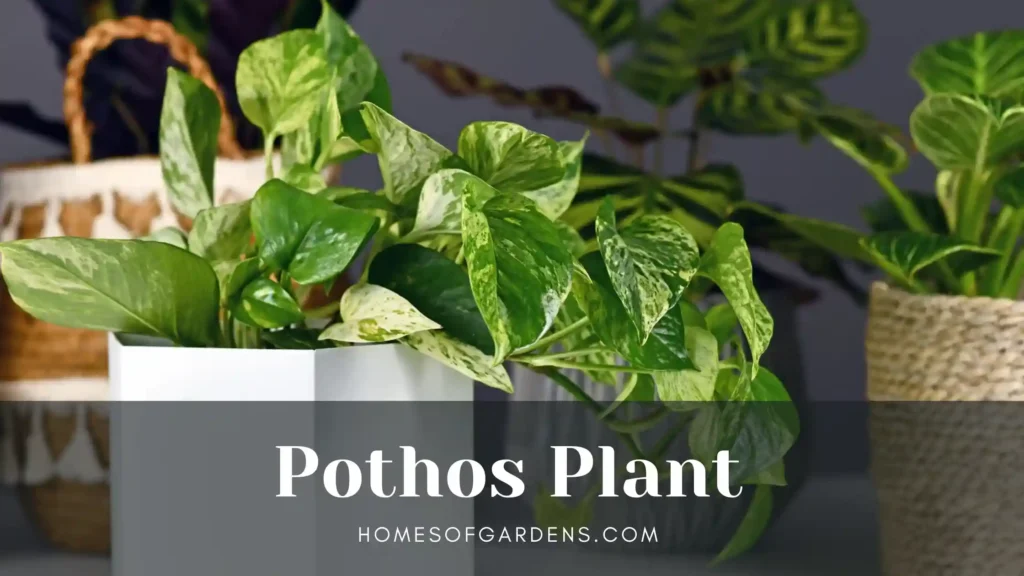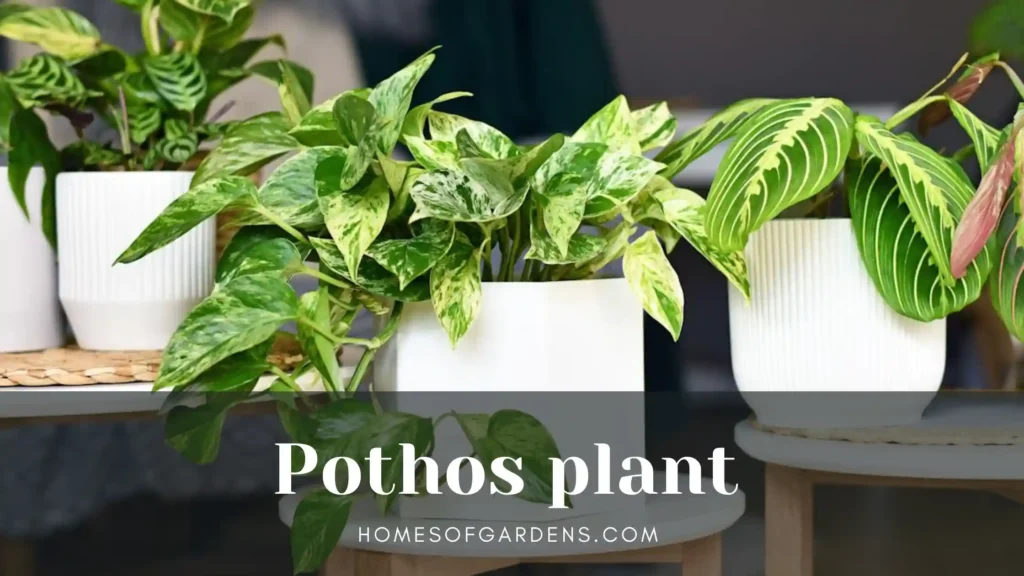There’s a reason that the Pothos plant (Epipremnum aureum) are now a standard in offices, homes as well as shopping centers across the globe. The heart-shaped leaf, and the trailing vines which seem to keep growing indefinitely add a sense of life into any space without requiring much. No matter if you’re a veteran gardener or one struggling to keep the greenery in check The Pothos will welcome you with its wide leaves that are tolerant, flexible, and always rewarding.
What makes the Pothos plant really special isn’t its toughness, but also the capacity to thrive in environments in which other plants could fail. It can tolerate the smallest amount of light, can withstand missed waterings and even helps cleanse the air. With time, one Pothos plant will turn into a spectacular cascading waterfall and spill over bookshelves hanging from walls, or hanging gracefully from planters.
In this article we’ll cover all you should be aware of when taking care of your Pothos from choosing the right water and light requirements to innovative ways of styling it inside your own home. In the end you’ll be able to see the reason why this plant has gained its name for being among the top adored home plants of all time.
Why the Pothos plant Belongs in Every Home
If you walk into any plant-loving home and that you’ll find the Pothos. Its popularity isn’t solely because of its beauty, but also because it’s an adaptable and tolerant plant that you can cultivate. This is why it’s an essential plant:
✔ Thrives in low light – Unlike many plants that wither without sunlight, Pothos grows happily in dim corners, offices, and even bathrooms.
✔ Drought-tolerant – Forget to water it? No problem. It bounces back quickly.
✔ Grows fast – Watch it transform from a small pot into long, trailing vines within months.
✔ Air-purifying – Studies show it helps remove toxins like formaldehyde and benzene from indoor air.
✔ Easy to propagate – Share cuttings with friends or expand your own collection effortlessly.
Originating in the forest of French Polynesia, the Pothos has been able to adapt beautifully to indoor living which makes it a favourite for novices and professionals alike.
Pothos Plant Care: Simple Secrets for Lush Growth
The best aspect of the Pothos is the amount it demands for in exchange for its beauty. But, if you provide it with the right conditions can help it to flourish, not just to survive.
Light: Where to Place Your Plant
Pothos is known for its flexibility in light. It grows the fastest in bright indirect light (like close to windows facing east) but it is also able to adapt to low-light conditions, which makes it ideal for rooms with low lighting or windows that are not in use in offices.
Do not place it in direct sunlight that can cause its leaves to burn. If you notice a slower growing or less leaves may require a little more sunlight.
Watering: When to Hydrate
Pothos tend to dry little between irrigations. Place your finger in the soil. If the top inch is dry, then it’s time to sprinkle water.
🚫 Overwatering is the #1 killer of Pothos! Yellow leaves are a telltale sign.
✅ Underwatering? The leaves will wilt but perk up quickly after a drink.
In winter, reduce watering frequency as growth slows.
Soil & Potting
A well-draining potting mix works best. If the soil is still wet add orchid bark or perlite for more drainage.
Repot every 2 to 3 years if your roots grow beyond their pot. Pothos prefer to be roots-bound, so it’s not a good idea to change the pot.
Humidity & Temperature
Pothos thrive in normal humidity in the home, but can benefit from occasionally misting. Maintain it at 65-85 degrees (18-29degC)–avoid cold breezes.
Fertilizing: A Light Boost
Feeding is done monthly during spring and summer. Use an ad hoc chemical fertilizer (diluted by half). Skip fertilizing in fall/winter.
Propagating Pothos plant
One of the joys of owning a Pothos is how easily it propagates. Here’s how to grow new plants from cuttings:
1. Water Propagation (Easiest Method)
✔ Steps:
- Cut a stem with 3-4 leaves (include a node—the bump where roots grow).
- Place in water, ensuring the node is submerged.
- Change water weekly. Roots will sprout in 2-4 weeks.
- Plant in soil once roots are 1-2 inches long.
2. Soil Propagation (Direct Planting)
✔ Steps:
- Take a cutting with a node.
- Plant directly in moist soil.
- Keep slightly damp until roots establish.
3. Layering (For Fuller Plants)
✔ Steps:
- Pin a trailing vine back into the soil (node down).
- Roots will form where the node touches soil.
- Once rooted, cut from the mother plant.
Common Pothos Problems & Fixes
Even tough plants can have issues. Here’s how to troubleshoot:
Yellow Leaves
- Cause: Usually overwatering.
- Fix: Let soil dry out more between waterings.
Brown Tips
- Cause: Low humidity or fluoride in tap water.
- Fix: Use filtered water or mist leaves occasionally.
Leggy Growth
- Cause: Not enough light.
- Fix: Move to a brighter spot or trim back to encourage bushiness.
Pests (Rare but Possible)
- Mealybugs or spider mites may appear.
- Fix: Wipe leaves with soapy water or neem oil.
Styling Your Pothos: Creative Display Ideas
The Pothos’ trailing vines make it perfect for:
- Hanging Baskets – Let vines cascade dramatically.
- Shelves & Bookcases – Train vines to frame your space.
- Wall Climbing – Use hooks or a moss pole for vertical growth.
- Terrariums – Smaller varieties thrive in glass containers.
Final Thoughts: The Plant That Grows With You

A Pothos plant doesn’t simply function as a garden, but an ally that can adapt to your needs. If you’re a waterer who is forgetful or a person who prefers a dim light or a person who likes to grow and share plants, the Pothos will give you beautiful, vibrant growth.
Start by planting one, and you’ll soon be surrounded with a lush forest of greenery. The best plant life is more than just ornaments, they’re living things that live alongside us.
Do you have a Pothos successful story? Tell us about your experience by leaving a comment below!
